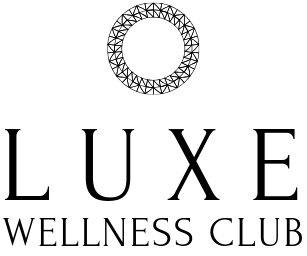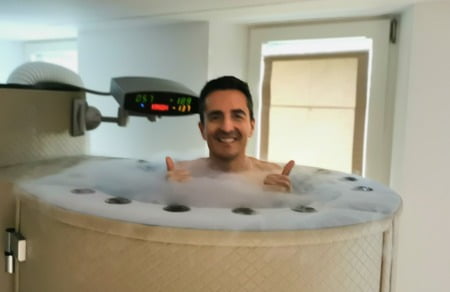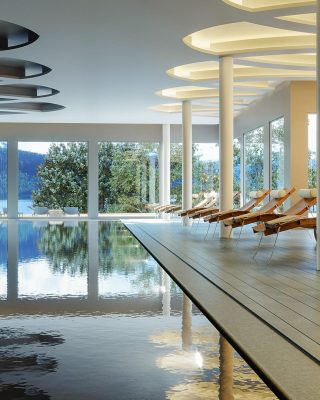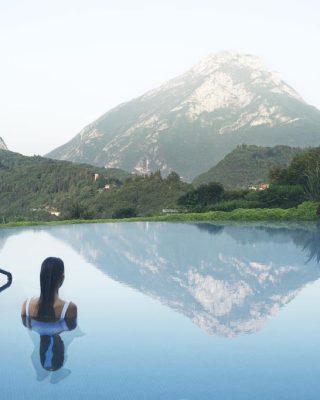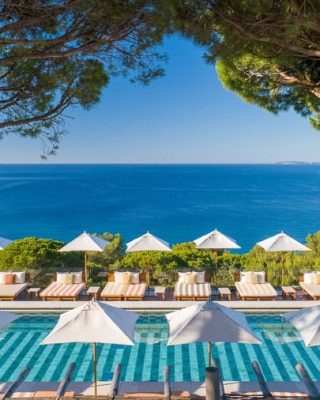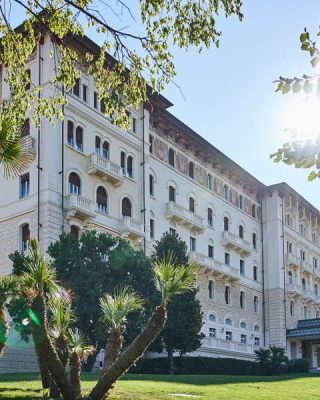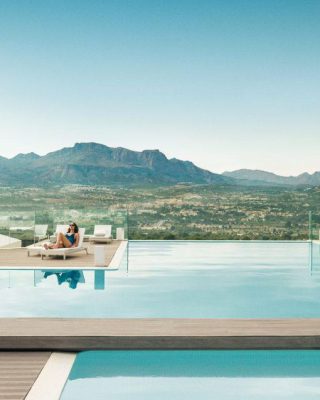Although the heat of saunas, steam baths and Turkish baths is still just as appealing, cold therapy is on the rise. More and more establishments are offering cryotherapy treatments, but what are the practicalities? Here’s a short summary to help you understand everything.
By the way, what exactly is cryotherapy?
First of all, cryotherapy can also be called “cold therapy”. It can be applied generally, i.e. to the whole body, or locally.
The term cryotherapy was coined at the beginning of the last century to describe the treatment of skin lesions with cold. Different types of cryotherapy are used today: convection cooling (immersion of the whole body), conduction cooling (immersion in cold water) and local treatment with cooling sprays, ice packs, compresses, etc.
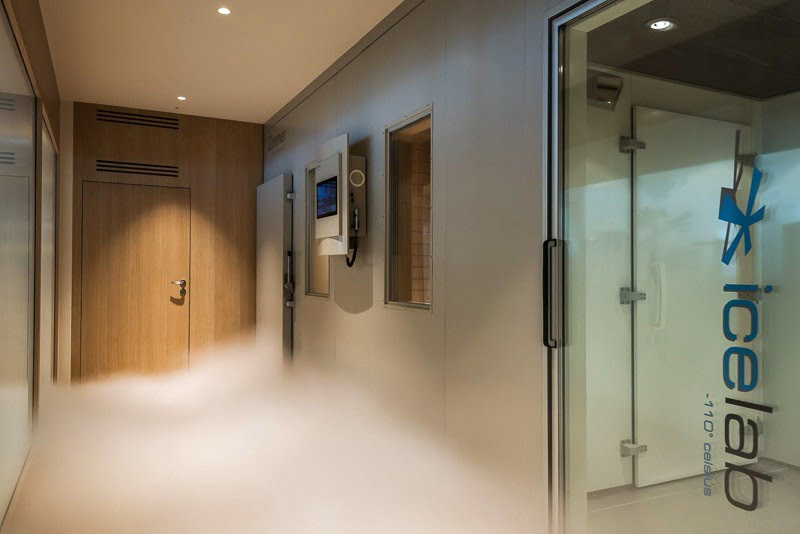
The principle is simple: the body is suddenly faced with an extremely low temperature, which causes it to react. This brutal thermal shock reduces the skin’s surface temperature from around 34°C to 7°C, and the body’s internal temperature is lowered by 0.5 to 1°C.
Cryotherapy and its benefits
On the immune system
Have you ever heard of people jumping into icy water? You may have thought they were crazy… Well, they’re not that crazy! In Nordic culture, exposure to the cold is a widespread practice, for one simple reason: it boosts the immune system and therefore reduces the chances of catching a cold or strep throat.
Cryotherapy is also said to help destroy cancer cells… Further studies are now needed to prove this.
On injuries
Cryotherapy is very popular in the field of sports, as it enablesmuch faster muscle recovery. You’ve probably already seen a player who’s just been injured treated directly with a can of cooling spray. It’s a kind of local cryotherapy: cold is an anti-inflammatory. Soothes aches and pains. Insep has demonstrated that trail athletes recover their maximum muscular fitness just one hour after a full-body cryotherapy session. Much more effective than an infrared session, which takes 24 hours to recover.
They also use cryotherapy to prepare for training, to better withstand exertion, or to promote healing after an injury. This technique increases blood flow and helps reduce edema.
On stress
Cold can also act on a part of the body linked to stress sensitivity: the hypothalamus. The great wave of cold you receive during a session leads to the secretion of more endorphins, resulting in a feeling of well-being and calm. It can also improve sleep disorders.
Dermatological benefits
To benefit from its effects on the skin, cryotherapy needs to be localized in order to be precise and apply the cold directly to the area in question. This is a widespread method for treating warts: liquid nitrogen burns them off by freezing. It can also relieve skin infections such as eczema.
Aesthetic effects
Localized cryotherapy is also used for aesthetic purposes to reduce wrinkles. Cold stimulates blood circulation and skin microcirculation. This promotes collagen production and firms the epidermis.
Cryotherapy is sometimes categorized as a fat burner. It’s true that to maintain a temperature of 37°C, you need to consume a lot of energy (around 500 Kcal in 3 minutes), but studies have yet to clearly prove this benefit. On the other hand, another practice, cryolipolysis, uses cold to reduce fat by destroying fat cells. We’re talking here about a suction technique (using a kind of suction cup).
How a cryotherapy session works
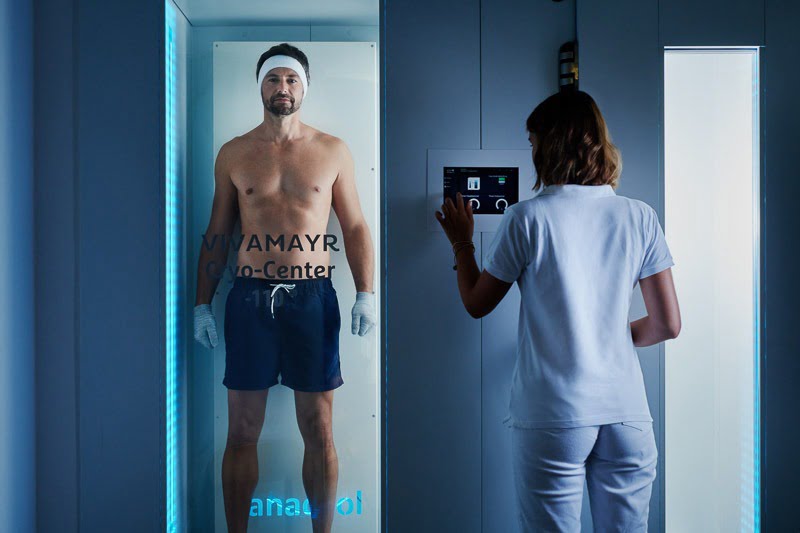
For a full-body cryotherapy session, you have to enter a cold chamber in your underwear, where the temperature is at least -110°C, and stay there for a few minutes! An alternative exists: cryosauna cabins where the head sticks out… In any case, don’t worry, you’ll have gloves and socks, as you need to protect your extremities, which are known to freeze more quickly.
It is also possible to divide the session into two or three stages: first a cabin at -10°C for about 30 seconds, then a cabin at -60°C to -80°C for another 30 seconds, and then a cabin at -110°C to -180°C for a maximum of 3 minutes.. It’s a “softer” way for the cold to gradually take hold of the body.
The environment must be completely dry, in order to withstand this extremely low temperature for two to four minutes. As the air is dry, the sensation is much more comfortable than diving into icy water .
However, this is an intense practice, which is why it’s important to follow the instructions carefully. A cryotherapy session is contraindicated if you have open wounds, or if you have certain respiratory, hypertension or circulation problems.
Whole-body cryotherapy sessions are becoming increasingly popular, and can be found in beauty salons, dermatologists and wellness centers. We have also selected exceptional hotels offering state-of-the-art cryotherapy treatments.
Our selection includes cryotherapy at the Waldhotel in Switzerland, Chenot Palace Weggis in Switzerland, VIVAMAYR in Austria, and SHA Wellness Clinic in Spain.
Book
Take advantage of our expertise in wellness stays and contact us for a personalized quote for a stay with cryotherapy sessions.
Call us on + 33 1 85 73 22 14 or on +41 22 501 75 16
